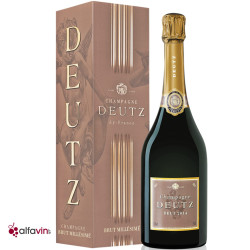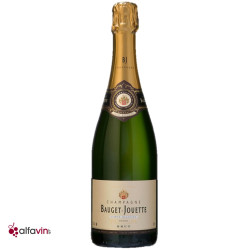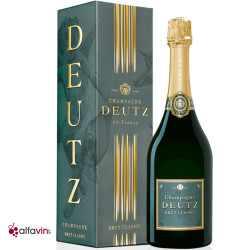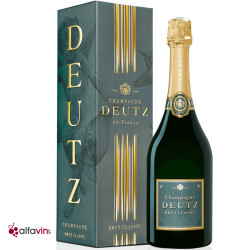- Home >
- Blog >
- advice-champagne-sparkling-wines >
- Food and champagne pairing : what to eat with champagne ?
Aperitif drink par excellence, served during events and festive meals, champagne is nevertheless a wine that can be paired with food. From appetizers to desserts, there are a multitude of possibilities. Depending on the champagnes you choose, you can find pairings that enhance both the dish and the champagne itself. From regional pairings to more gastronomic pairings proposed by sommeliers, there is a wide range of what you can do with champagne and try to find the perfect match. Alfavin.ch gives you here its good food and wine tips, drawn from its own experiences, without any pretension and always with pleasure in the background! Here we go...
Food and champagne pairing as a starter
The combination of seafood and champagne always works very well. A salmon tartar with citrus fruits, for example, served with a champagne made mostly from chardonnay, is a great match. The fat of the salmon is balanced by the freshness of the chardonnay and the citrus fruits bring an additional aromatic note. Another more atypical and less common pairing,
oyster and champagne sabayon. The oyster is served warm, on top of which is placed a sabayon (egg yolk made into a mousse with champagne). Unconventional it must be admitted, but with a slightly vinous white champagne, the agreement is perfect. More classic, a fish terrine with vegetables on which you can serve a blanc de noir type of champagne made from Pinot Meunier (a less vinous grape variety than Pinot Noir). Choose a wine with a fine bubble and delicate notes so as not to overwhelm the dish.
What dish to eat with champagne?
When you decide to serve a champagne with the main course, an important element in the dish should not be forgotten...the sauce. Indeed, this component of the dish is essential and plays the role of binder between the dish and the wine. A pairing that works wonderfully and that was created by an illustrious French chef in the 70's:
the line-caught sea bass, champagne emulsion and caviar. North Atlantic fish with firm and melting flesh, a sauce made of light cream and champagne, emulsified (like a mousse) and caviar (placed on the fillet). A dish of finesse and elegance. To accompany it, choose a blanc de blancs champagne with floral notes, with a fine and delicate bubble, and with a nice freshness to counterbalance the unctuousness of the dish.
Another possible pairing with champagne is a farm poultry, cooked at low temperature, with a cream and morel sauce. For this type of dish, opt for a more vinous champagne, a blanc de noirs with grilled notes and undergrowth to bring out the flavors of the morels; a vintage champagne with a very good length in the mouth. The round texture of the champagne to accompany the unctuousness of the flesh, the aromas that intermingle and the persistence of the champagne to accompany the dish.
Which cheese for which champagne?
We often think that red wine and cheese is the only possible pairing since we often drink this type of wine with the main course. Even if historically, it is true that red wine is THE ideal companion in many homes, champagne, just like white wine, has its place at this moment of the meal. Before giving you some agreements that work rather well, we will explain why. Champagne or white wine are two types of wines with aromatic tracers such as white fruits, floral notes, undergrowth, dried fruits, spices, etc... Well, in cheeses, we find these same notes. Making food and wine pairings with a common base of aromas allows to create sumptuous agreements.
Soft cheeses like Brie or Camembert appreciate champagnes with a rather lively bubble to counteract the creaminess of these cheeses. With a blue cheese from St. Gallen, choose a champagne with residual sugar. The sugar present attenuates the aromatic power of this type of blue-veined cheese.
Another possible pairing is an old Gruyère cheese with full-bodied notes served with a windier champagne with toasted notes, such as a Blanc de Noir from the Montagne de Reims.
Which champagne to accompany a dessert?
At the end of the meal, the taste buds are often saturated. Choose preferably
champagnes with a rather fresh and delicate bubble, fruity vintages. A beautiful possible agreement and moreover, very regional: Pink cookies of Reims and Rosé Champagne. This cookie was invented at the end of the 17th century by craftsmen who wondered how to use the heat of the oven once the work was finished. Made of sugar, egg and flour, the cookie is baked quickly in the oven. Initially white in color, the artisans later added vanilla and carmine (a natural red dye) to make them more appetizing. A fruity and fresh cuvée of champagne rosé to accompany this dessert. Another possibility is a strawberry and basil tartar.
You now have the cards in your hand to create beautiful pairings around champagne. Don't hesitate to consult our article "
How to choose a champagne for the holidays" if you want more information. Always keep in mind that pleasure remains the key word.
Discover our articles on champagne:
THE BEST ITALIAN PROSECCOWHAT IS THE DIFFERENCE BETWEEN SPARKLING WINE, CRÉMANT AND CHAMPAGNE?HOW IS SPARKLING WINE MADE5 IDEAS FOR APERITIF COCKTAILS WITH CHAMPAGNEOur wines linked to this post

66.00 CHF

36.00 CHF

49.00 CHF

105.00 CHF










